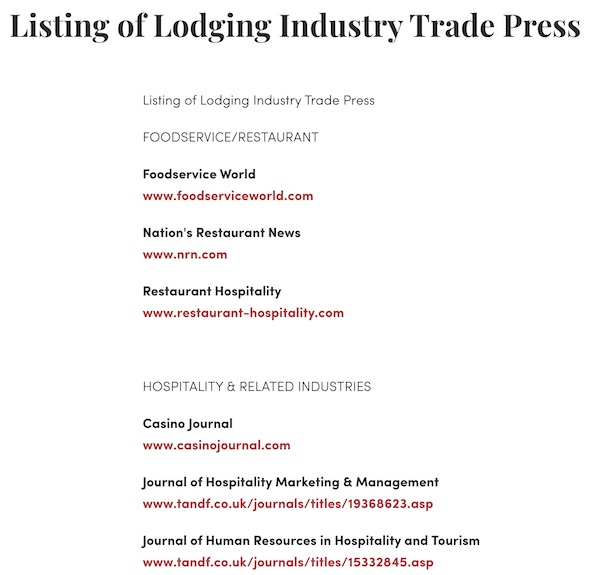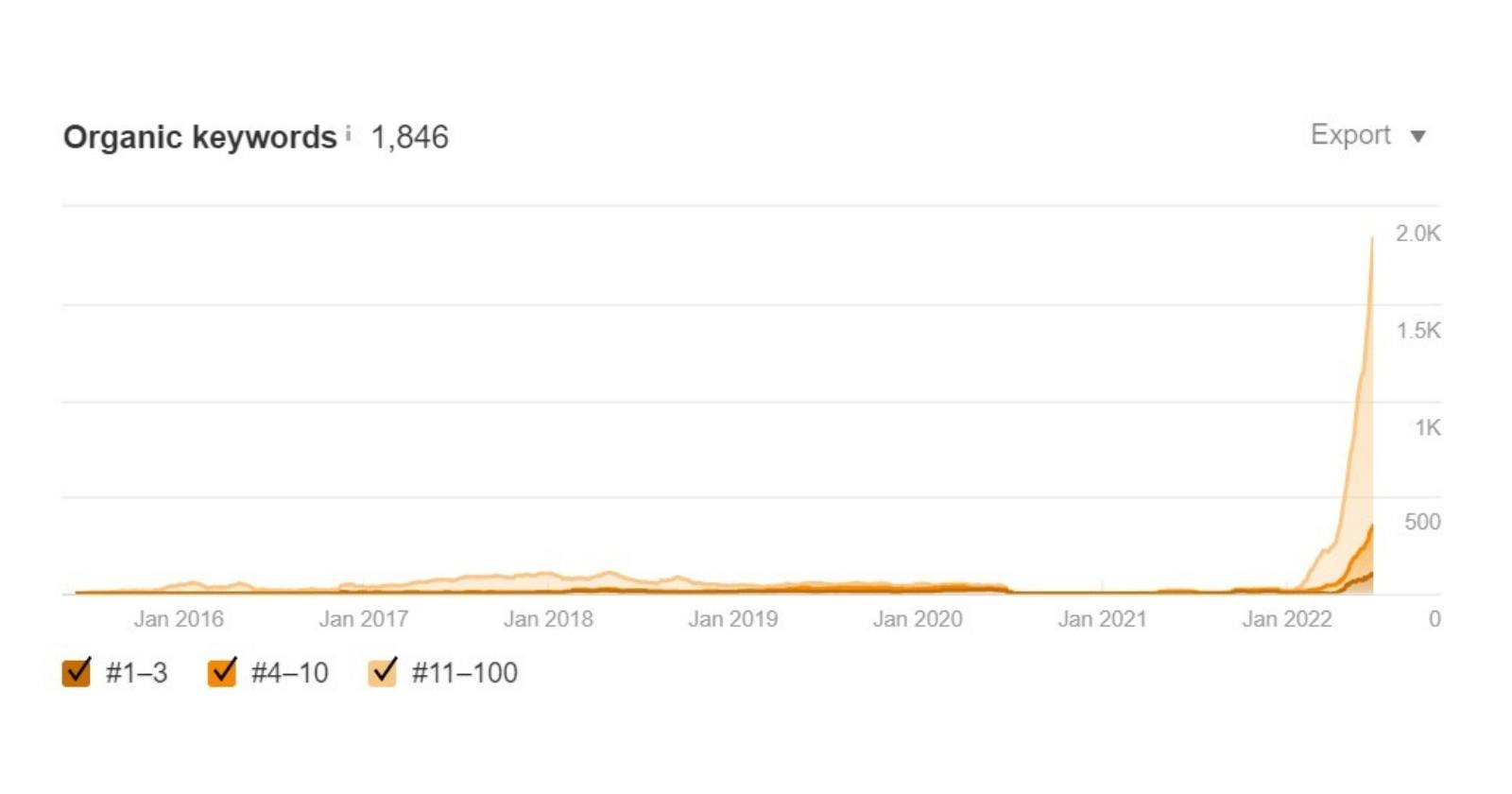Is anyone reading your articles or blog posts?
It takes time, money and energy to create articles.
The average business focuses all that effort on writing the article— overlooking a decision that can multiply their efforts: deciding where to publish the article.
If you publish on your own website, it’s difficult to know who’s reading. And if no one’s visiting your website, there’s no one reading at all.
Go where your clients already are
One solution to that problem is SEO. Better rankings on Google should equal more eyeballs on your articles.
You should be working on SEO at the same time. No question. This is your key to sustainable results in the long run. But SEO is a long game, and you want faster results.
So in addition to working on your Google strategy, you can go where your prospects already are.
Who do you want to read your articles?
Your articles have a specific audience — most likely, prospective clients.
To reach that audience and capture their attention (and ultimately work with them), you have to first get in front of them.
For example, let’s say you’re a technology integrator.
Most professionals — including the ones who have a problem you can solve — read trade publications for their industry. These publications are where they go to stay updated on industry trends and learn how to grow their businesses.
By guest publishing in the trade publications they already read, you can get free exposure while positioning yourself as an expert to that particular readership.
Why bother publishing content on other websites?
Let me quickly address some valid skepticism: Why should I give my content away to some online magazine instead of adding to my own site? The answer is that you can eventually do both, but guest publishing has some unique benefits:
Reach a much bigger audience
The reality is that most businesses don’t have monthly readership in the tens of thousands, but trade publications do.
Reach a very specific audience
On top of that, you can be confident that the right people are reading. A reader of New York Law Journal is, most likely, a lawyer in New York. If that’s your target market, writing as an AV expert for that journal means getting in front of thousands of potential clients.
Stand out as an authority
Most of your competitors are targeting those people with social media ads or waiting for the referral to land in their lap. Stand out as an authority to the people you want to work with by publishing in the online magazines they read.
Show your expertise by educating
How do you want to be perceived in the marketplace? Do you want people to come to you as the expert? Do you want your company to be known as a helpful leader in the space?
When someone discovers you through an article in a publication they already know and trust, you get the benefit of that familiarity and trust.
Reading someone’s article is not the same as meeting them. But people are still interacting with your thoughts and expertise. And over time, they’ll associate you with the expertise you shared.
You can also use the relationships you build with the publications for other opportunities for exposure — like webinars, email list blasts, or podcasts.
Personalize
Personalization helps you stand out. An article can’t be 100% personalized, but if you’re writing for a targeted enough audience, readers will recognize and appreciate that you’re writing for them— not for everyone.
What to publish
Sold on the idea? Now you just need to figure out what kind of content is going to accomplish your goals.
Stick to topics you know well, and write it with the intention of helping educate readers. Here are some prompts:
- What questions do your clients ask you frequently?
- What do you wish they knew about the technology you install?
- What are 1-3 ways they can improve their company’s technology on their own?
Integrators are well positioned to help companies adapt to working from home, for example. If your target audience includes companies dealing with this change, you could write about how employees should adapt their home offices for more productive virtual meetings.
Anything goes, as long as it’s genuinely helpful information that also lines up with your business goals.
In a minute, I’ll dive into more detail on choosing topics.
Where to get published
Writing for a trade publication means choosing a niche industry. It doesn’t have to be the only industry you serve, but for this purpose you’ll need to choose one market to target.
To choose who to write for, ask yourself:
- Who are your best clients?
- What type of clients do you want to work with more often?
- Over the past year, what have been your most profitable and enjoyable projects?
- What types of clients were they with?
- Do you notice any trends?
- Can you identify 1-2 vertical markets they’re part of?
For example, let’s say your most profitable, enjoyable integration projects are in hospitality settings.
- Who makes the decision to hire you on those projects?
- What online publications do they read?
- Who are the industry leaders they follow online?
Start by checking out their trade publications. If hospitality is a niche you want to target, start by googling “hospitality trade groups”. Browse their sites to find the publications they recommend. These are likely the ones their members read.
A quick search turned up one hotel association’s recommendations:

Build a list of those publications and points of contact using a simple spreadsheet (click here to copy our template)

Don’t want to deal with publishing, but still want the exposure? Set up an account on https://www.helpareporter.com/ and provide quotes to journalists. They’ll link back to your website and expose new people to your name and company.
How to pitch your guest article ideas
After researching, say you’ve identified Hotel Business, Lodging Magazine, and Today’s Hotelier as three places your prospects go to learn and stay informed.
Now the challenge is to uncover the unique perspective you can provide those publications’ readers.
What problems do hotel managers deal with?
- Guest dissatisfaction
- Outdated, trouble-prone tech in guest rooms
- Staff productivity
- Door keys not working
- Vacancy
Of those, which do you solve?
- Outdated, trouble-prone tech in guest rooms
What core benefit are you providing for the person or business?
- Happier guests
- Fewer calls to the front desk about TV troubles
- Differentiation from competing hotels
- More repeat guests
- Can charge higher rates
Use this perspective to brainstorm 10-20 headline ideas for possible articles. Don’t waste your time writing entire articles before a publisher has accepted them — you’re pitching ideas only.
Based on the problems you solve, say you come up with:
- Stop troubleshooting guests’ tech: 3 ways to improve your guest experience
- How smart technology can get you more repeat guests
- 5 pieces of smart technology that should be in every great hotel room
…and 7 more
Now take these headline ideas and pitch 3 of them to each publisher you’ve identified
Tip: you don’t want to pitch the same one to multiple people in case they both accept the same one.
How to send your pitches
Most publications have a Contact, About, or Press Inquiries page with personal emails of editors, assistant editors, media contacts, and more. Often, you can find the personal emails of the editors.
Here’s an email we sent to a publication to pitch our own writing (feel free to adapt for your own use):
Hi {FirstName}
I run an AV integration company catering to {publication’s market}. I think there may be some helpful perspectives I can provide to the readers of {publication}.
Here’s an example of the type of content I can contribute: {link to example such as a blog}
I’d be happy to write up something exclusively for {publication}, if you think it might be useful to your readers? If you think there might be a good fit, I’ll share some possible topics with you.
Let me know!
Can’t find their email? Try this method using LinkedIn:
Search for the editor or press contact for your target publications on LinkedIn. Send them a connection request with a similar note attached. You’ll be surprised at the positive responses you get by sending personalized, super relevant messages on LinkedIn. (Note: this works best if you already have a well-optimized LinkedIn profile.)
Build an ongoing relationship
It takes time for readers to start noticing your name. The first article may not bring you business. That’s why it’s important to form a relationship with your point of contact at the publication.
Once they’ve accepted your piece, go back to them once a month, or every other month, and pitch new ideas.
Or better yet — ask to set up a regular rhythm. Suggest to the publisher that you can send over a handful of headline ideas ahead of time, and then write 1 per month.
Once you’ve been published in one publication, you can more easily return to the publishers who said no or didn’t respond at first and pitch them again. Here’s a simple script you can steal:
“We’ve recently been published in Publication A and Publication B. Can you see this type of content being useful to your audience at Your Publication? Let me know and I’ll be happy to run a couple of topics by you.”
How to make the most of the content you write
Repurpose it.
Don’t make the mistake of investing time or money into a quality piece, only to immediately move on to the next one. Get a return on your investment by making your article work double duty:
- “Reactivate” past leads by sending the piece to them. This is an easy way to reconnect with old contacts and provide a non-spammy way to get your company back on the top of their mind
- Engage LinkedIn connections in a helpful way by sending it to them
- Take quotes and drip them out on your LI feed over time
- Use it to reach out to podcast hosts in the same space and offer to talk about the same topic
- Use it to reach out to organizations or trade groups in the space and offer to host a webinar on the topic
- Ask people to share it with their networks
- Tag people who may be interested in the comments section of your LinkedIn
Why guest posting is important
First, guest publishing should be a win win — the publisher gets valuable content for free, and you get free exposure.
But to get that exposure, your article has to have an author bio of some kind that links to your website (or at least a link to your website in the body text). Otherwise the benefits are pretty much one-sided (the readers won’t know who wrote it and you won’t get any traffic directed to your site), so make sure the publication you’re writing for agrees to this ahead of time.
Second, ask the publisher if you can put a call to action in your author bio (something like, “Sara Smith helps hotels improve their guest experience with user-friendly tech. Get in touch with her here.”) Depending on their editorial guidelines, they may allow this, and it can help prompt more readers to contact you.
Done well, guest publishing in publications is a great way to increase your brand’s presence and reach many people at once without paying for advertising.






